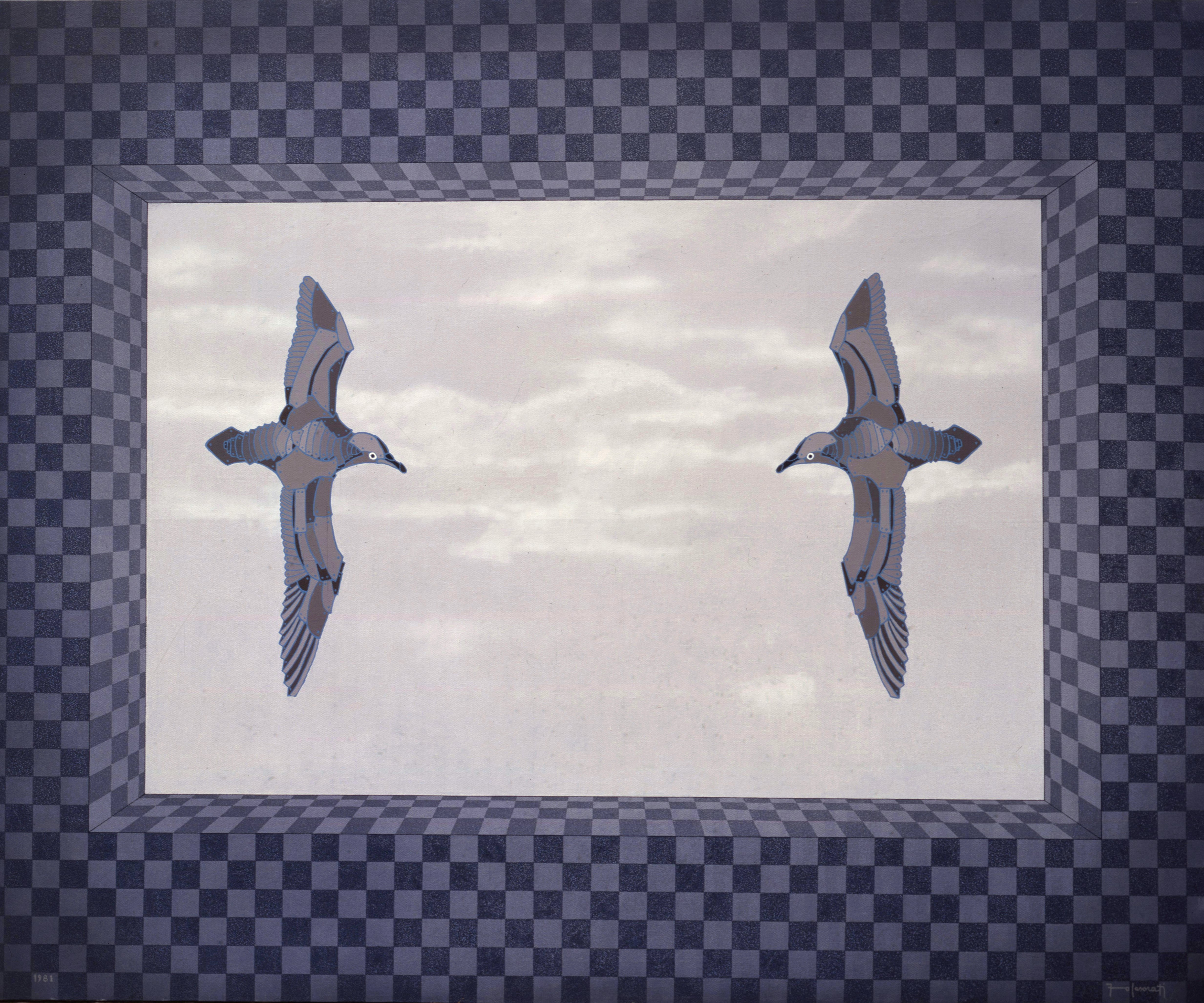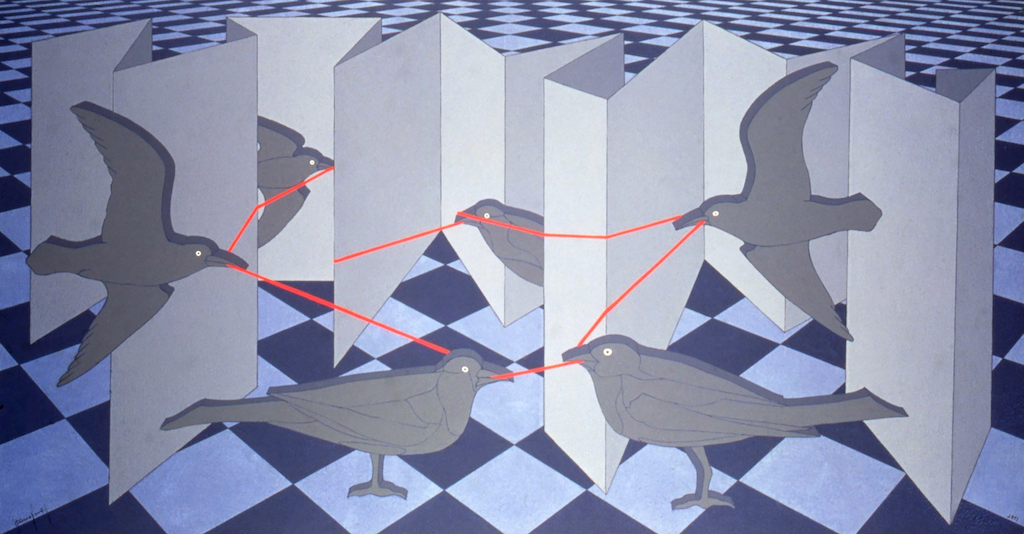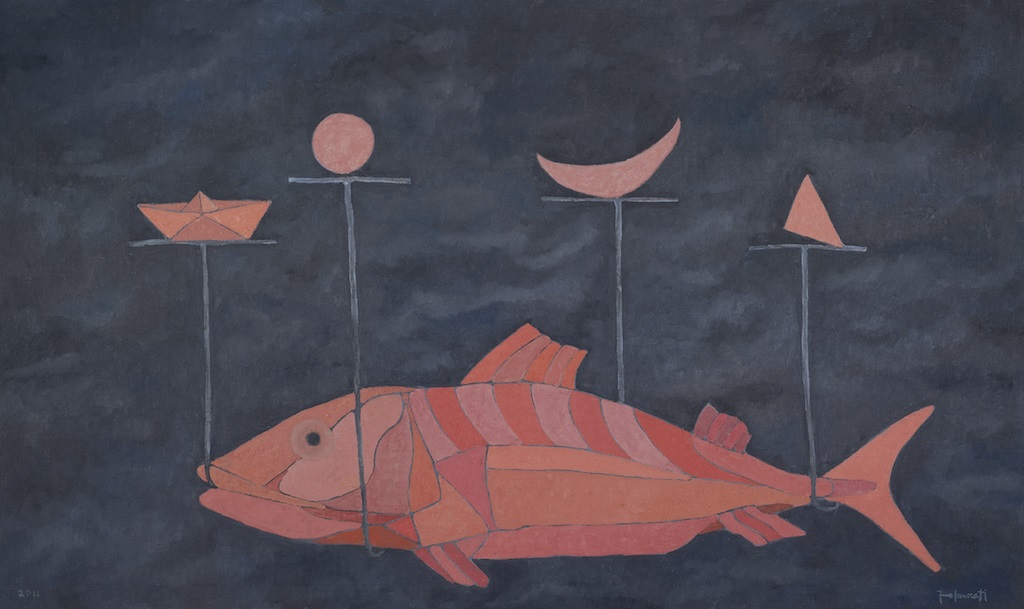Suspended between magic and geometry, Francesco Casorati’s lyrical universe is told in an exhibition entitled Francesco Casorati. Between magic and geometryscheduled at Palazzo Lomellini, in Carmagnola (Turin), from 2 September to 13 December.
The most significant stages of the artist’s career are marked by about thirty works, divided into four main “focuses” dedicated by choice only to the pictorial works selected for their emblematic meaning by the curator Elena Pontiggia who, in her introductory essay to the catalog, focuses on the completely original and independent character of Francesco Casorati’s artistic career.

Franesco Casorati, Battle in the woods, 1953
A visionary Babel tower from 1952, a metaphor of war and the inability of men to understand each other, welcomes guests in the first room of Palazzo Lomellini. It is painted by a Francesco Casorati just eighteen years old, yet an already mature, informed, cultured artist.
“To be born in a family where the father (Felice Casorati ed) is one of the greatest artists of the century and his mother is Daphne Maugham, a painter of rare refinement – Elena Pontiggia writes in the catalog – means being born in an Academy of Fine Arts, graduating at the age of four, breathing painting from birth. Francesco will always be stylistically very different from Felice and will undertake a courageously independent path. From him, however, he learns a fundamental concept: the notion of a painting that is not born from the impression, from the sensation, but from the idea ”.

Francesco Casorati, Big window, 1981
So in Babel tower Francesco transforms a dramatic concept such as that of war into a great game that sees as protagonists small stylized men like puppets, reaching towards the sky on shaky stairs, contemplating the red sphere of the moon.
“So the story of a human failure – continues Pontiggia – is subjected to a catharsis that makes it almost similar to a fairy tale, with an expressive procedure that will always return to the artist”.
Blue, on the other hand, is the dominant color in the second room hosting the exhibition, as emerges from the work The Great Sparrow from 1968. Casorati dialogues with Pop Art and also with Surrealism, especially Magritte’s. The blue, on which in the second half of the sixties he set his compositions, represents the color of the distance – as Cézanne said – and at the same time of the dream. “It is a monochrome that removes the image from the banal coloring of everyday life and from the immediate realism, equally banal,” explains the curator.

Francesco Casorati, Game on the floor, 1984
In the room dedicated to works painted in acrylic, housed on the second floor, the subjects are cooled and suspended as in Paper maze of 1984, to give way, in the last room, to the most recent production characterized by the return to oil painting, which allowed Casorati to give free rein to more lyrical chromatic and material vibrations, as in the poetic Seven boats and three fish of 2010.
“For over ten years, between the seventies and eighties – explains Pontiggia – Casorati abandons the oil technique in favor of acrylic, functional to obtain an almost monochromatic and rarefied texture, on which to project the new visual fairy tale with atimbral tones and metaphysical architectural rigor “.
Finally, the triptych marks the last stage of the exhibition Storm of 1986, which proclaims the return to oil painting, to expressive rhythms, to new chromatic vibrations imbued with “poetic unreasonableness”.
What unites the different phases, up to the works of the 2000s, is however the anti-naturalistic character of the whole pictorial representation of Casorati, fairy tale and abstract, mental and at the same time visionary, independent from the artistic currents, yet open to a dialogue sui generis with some of these same currents when not far from his poetics and vision of the world.

Francesco Casorati, Pink fish, 2011, Oil on canvas, 150 x 90 cm
The path invites the observer to grasp the ability of Casorati’s painting to dialogue with contemporary trends without belonging to any of them.
On the other hand, the artist himself confessed that he had always painted “outside any current, naturally paying the price of this isolation”.
In painting, in particular in the construction of triangles and lozenges, there is no lack of echoes of the great masters, from Bruegel to the great totems of de Chirico, in a large time that does not cease with the present, but that feels all ages as contemporary.
The exhibition, with free admission, is open from 2 to 11 September, from Monday to Friday from 20.30 to 23; Saturday and Sunday from 15.30 to 18.30 and from 20.30 to 23. From 12 September to 13 November it can be visited on Thursday and Friday from 15.30 to 18.30, Saturday and Sunday from 10.30 to 12.30 and from 15.30 to 18.30.

